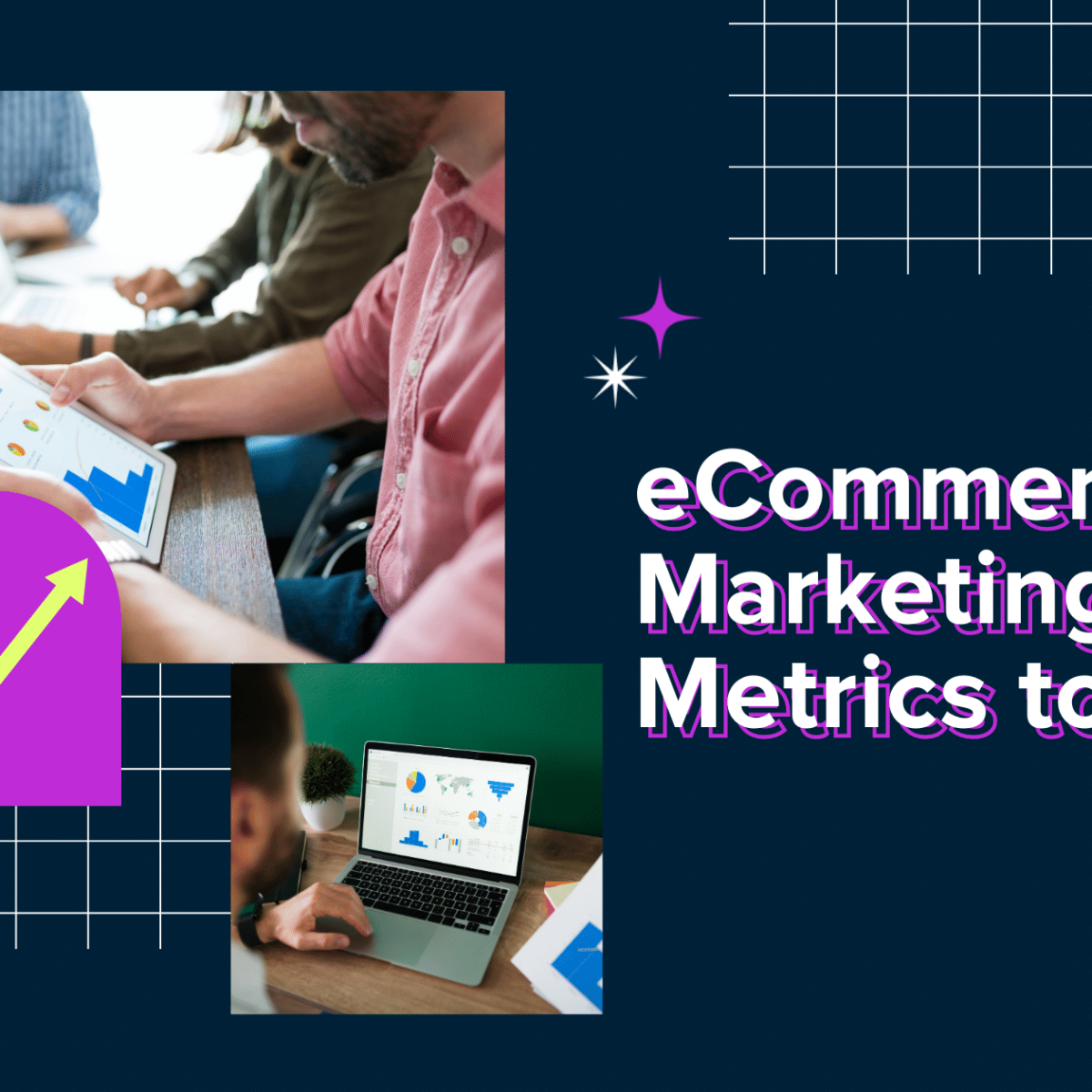E-commerce marketing centers on your product content. Shoppers rely on the content within your online store to help them make their purchase decisions. To hit your goals, you must understand the e-commerce metrics to watch and track. Your content drives your success. Branding, marketing, sales, customer retention: your product content affects them all. Gaining an awareness of the relevant metrics to measure and trends to follow, and how to set KPIs for your business empowers you to make the most of your online presence. And it all starts and ends with your content. The role of content in your online business can’t be overstated. Continue reading to learn the e-commerce marketing metrics you need to watch. The terms “metric” and “KPI” are often used interchangeably when discussing measures of success or goals achieved. But to accurately evaluate your e-commerce marketing strategy, you must understand the difference between the two terms and how each affects your decision-making. Metrics are quantifiable measures of your online store’s success. Metrics measure processes. By focusing on specific metrics, you can zero in on essential criteria to determine the efficacy of your SEO, marketing, engagement, and sales goals. KPIs (Key Performance Indicators) measure the performance of your metrics. They’re subjective, specific targets you try to hit. You must understand relevant metrics and KPIs to effectively track, measure, and grow your e-commerce business. As we emphasized above, content matters, especially as you consider metrics to set and hit your KPIs. Evaluating the impact of your online product content allows you to determine what you’re doing well and what you need to change to achieve your e-commerce goals. Content metrics reveal the content that speaks to your customers, informs them of your products, and drives them toward a purchase. The following KPIs help you understand how to think about your e-commerce marketing strategy. Analyzing these metrics allows you to measure the impact of your product content and determine if it’s bringing you closer to your goals. Content drives traffic. Therefore, traffic acquisition is a critical measure of your product content’s value and impact. When you publish product content, search engines like Google crawl and index your pages, ranking them among other content on the digital shelf. When you optimize your product pages for SEO, you can earn top spots in search results, which means your product detail pages –– and, therefore, your products –– reach a greater volume of potential customers. Monitoring traffic data helps you identify how shoppers visit your product pages and if you earn organic traffic through Google. If your traffic is low, you can evaluate the next best steps to ensure you’re not losing out to the competition. Your conversion rate is one of the most crucial e-commerce marketing metrics to track. This number shows how many of your site visitors make a purchase, revealing the efficacy of your efforts. A high conversion rate indicates that your product content engages and informs visitors and compels them to buy. An effective product content strategy plays a significant role in increasing e-commerce conversion rates. If users won’t commit to buying your products, there’s likely a gap in your content and marketing strategies. Quality content is necessary to increase and maintain your e-commerce sales. When you sell online, your content represents your product. Including quality, informative, exhaustive content on your PDPs provides shoppers with the information they need to purchase confidently. High conversion rates indicate that you provide product images and content your customers seek. Rich content, also referred to as below-the-fold, A-plus, or enhanced content, allows you to engage with shoppers in a more intimate, nuanced, and often effective way than traditional media, like standard photography. Including rich content helps you gain a competitive advantage while bolstering your e-commerce marketing. As you include rich media, take advantage of analytic capabilities to track and improve your performance. Rich content KPIs can include This information is invaluable for your marketing strategy and can provide insights that affect your go-to-market strategy – from messaging to branding. Your site’s average order value (AOV) shows how much your customers spend with each transaction: the higher your AOV, the higher your profits. Your AOV can provide insight into a few factors: Your e-commerce marketing strategy will significantly affect AOV. Firstly, fundamental product content ensures visibility and discoverability across the digital shelf. From there, enhanced content, pricing, relevance, bundling options, and other elements educate and engage shoppers. An informed shopper is a confident buyer. Cultivating trust with compelling product content encourages customers to buy more. Online cart abandonment sits at nearly 70 percent. These numbers indicate that most product content isn’t compelling shoppers to take the final step in the purchase process. Your abandonment rate reveals the weakness or strength of your e-commerce marketing. Unlike brick-and-mortar sales, you cannot engage or support shoppers with face-to-face interactions; more reason to establish a robust marketing strategy and diligently track your metrics, including cart abandonment rate. Your marketing should draw visitors in, inform them with abundant product data, and include a call to action that brings them to checkout. When a user navigates to their cart, they should not hesitate to click “buy now.” Product content and data should cultivate confidence and excitement in the consumer. All content, including imagery, specs, and descriptions, must work harmoniously to provide a holistic experience that convinces your audience to buy. If you can provide this type of product content experience, you’ll find that your cart abandonment rates drop. Every e-commerce store will see returns. The nature of online shopping makes customer returns inevitable. And while you’ll never see a return rate of zero, your rate can help you identify and expose weaknesses in your e-commerce marketing. Consider the top reasons for product returns: Your product content, from visuals to fundamental data, impacts customer satisfaction upon delivery. When you get your product content right, your shoppers can set realistic expectations for their purchase. Customer satisfaction will plummet if product content fails to provide an accurate picture of an item. Present your visitors with plenty of informative, rich product content through every possible touchpoint to ensure they make an informed decision. Doing so increases the likelihood that they’ll be happy with their purchase –– and that they won’t need to make a return. All e-commerce brands and retailers share the same goal: sell more products and increase profits. But many organizations don’t know the necessary steps to get there. It all begins with your marketing strategy. Taking hold of the digital shelf requires an intentional plan to create an online presence that converts shoppers. Understanding the e-commerce metrics and KPIs to track and measure helps you define the most relevant, effective, results-driven marketing strategy for your business. Content Status provides the tools and resources needed to build an e-commerce marketing strategy that puts your brand on top – and keeps you there. Our solutions optimize your online presence, providing data-driven insights that guide you forward. Contact the team at Content Status today to access the e-commerce marketing tools you need to win. Get the latest articles delivered directly to your inbox!E-Commerce Marketing Metrics to Watch: KPIs and Trends
Understanding Metrics vs. KPIs in E-Commerce Success Evaluation
Why Product Content Metrics Matter
1. Traffic Acquisition
2. Conversion Rate
3. Rich Content KPIs
4. Average Order Value
5. Cart Abandonment Rate
6. Return Rate
Building a Results-Driven E-Commerce Marketing Strategy
Love reading, keep reading

E-Commerce Marketing Metrics to Watch: KPIs and Trends
Reading Time: 5 minutes
Contents
hide
